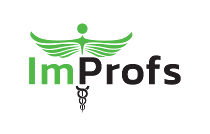Agile recruitment and selection
Agile Recruitment and Selection Agile recruitment is an innovative and more efficient way to fill key positions in an organization, inspired by the Agile approach from the ICT sector. Instead of the traditional waterfall method, where each process step is sequential, Agile recruitment offers an iterative and flexible process that is more responsive to changing needs and delivers results faster. The Waterfall Method in Recruitment and Selection The traditional waterfall method involves going through the entire process in a linear sequence.
First, a profile is prepared, including skills and job description. The recruiter then searches for candidates and, after a long search, presents a list to the client. This process allows little room for interim adjustments and can result in a mismatch between the original requirements and the end result. Agile Approach in Recruitment The Agile approach, on the other hand, works in short, defined sprints and provides continuous feedback and adjustments. This model offers the following advantages:
1. Iterative Process: Instead of waiting until the end of a long process, results are delivered and evaluated incrementally.
2. Engagement: All stakeholders, including managers and other stakeholders, are actively involved throughout the process.
3. Flexibility: The process can be continuously adjusted based on feedback and changing needs. Example of Agile Sprints in Recruitment and Selection
1. Sprint 1: Definition of Responsibilities and Objectives
– Work with relevant managers to define the core responsibilities and objectives of the role. Focus on what the candidate must achieve to be successful.
– Formulate the Employee Value Proposition (EVP) to understand why a top candidate would want the position.
2. Sprint 2: Initial Candidate Search
– Search the immediate area and networks for suitable candidates based on the criteria determined in Sprint 1.
– Put interested candidates in direct contact with relevant managers.
– Collect feedback and use it to adjust and refine the search.
3. Sprint 3: Evaluation and Adjustment
– Evaluate the results of the first round of candidates.
– Adjust criteria and search strategy based on feedback from both managers and candidates.
– Repeat the process until a list of suitable candidates is compiled.
4. Sprint 4: Final Selection
– Thoroughly evaluate the remaining candidates.
– Involve all key people in the final selection to ensure that the most suitable candidate is chosen.
– Ensure agreement among all involved on the final decision. Benefits of Agile Recruitment
– Better Results: With continuous feedback and involvement from managers, the selected candidate is more likely to be a good fit for the role and the organization.
– More Efficient Process: The iterative nature of Agile allows for faster adjustments and decisions, making the overall process more efficient.
– Increased Satisfaction: All stakeholders feel heard and involved, leading to a higher level of satisfaction with the end result.
Conclusion Agile recruitment offers a flexible and efficient approach to filling key positions within an organization. By working in short sprints and incorporating continuous feedback, this methodology ensures better manager engagement, faster adjustments and ultimately better results. Agile recruitment is thus a valuable improvement over the traditional waterfall method, resulting in a more effective and responsive recruitment process.
Contact us for more information! Email info@improfs.nl or use the comment form below.






